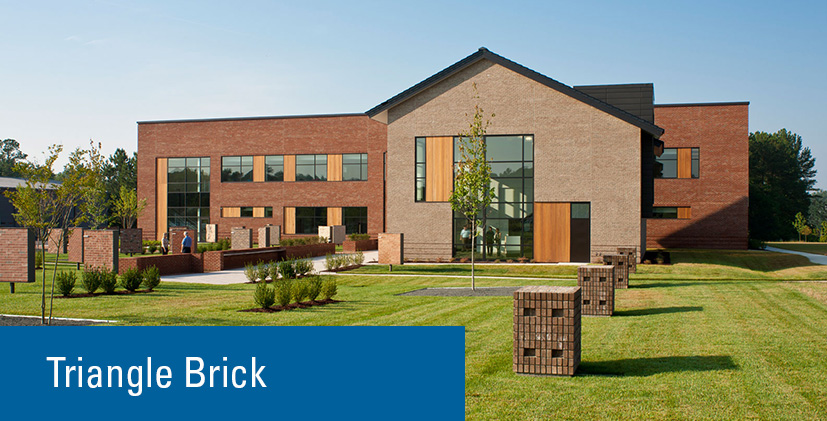NCMEP Partner Helps Brick Manufacturer Achieve Safety Milestones
Bricks. Bricks. And More Bricks. Man has utilized bricks for building construction for more than seven thousand years, making them one of the oldest known building materials. The first bricks, made in areas with warm climates, were made of mud and dried in the sun for hardening. The first big breakthrough in brick making, some 3500 years later, occurred when the Romans learned how to fire bricks in kilns without the heat of sun. However, it took an exceptionally long time for the bricks to cure. The Romans typically made their bricks in the spring and then stored them for two years before using them—an incredibly slow and laborious process.
Fast forward to the year 2020 where Triangle Brick, site of North American base operations for the German parent company Röben Tonbaustoffe and one of the leading brick manufacturers in the US, can produce 500 million bricks per year—10 million per week (the same amount used to build the Empire State Building) or 60 thousand bricks per hour.
And, every single brick they manufacture, for either residential or commercial construction, boasts of innovation—meets or exceeds ASTM standard specifications, proprietary color blending, use of recycled materials and more.
Utilizing Automation and Technology
Triangle Brick, with North Carolina roots dating back to 1959, is one of the most highly automated brick manufacturers in the country and has plants in Wadesboro and Moncure, North Carolina and Clay County, Texas. Howard Brown, CEO of Triangle Brick said, “We utilize automation and technology to transform every step of the brick manufacturing process—from mining to manufacturing to distribution and service.” In addition, their plants feature some of the world’s highest capacity industrial robots for their entire process, from end-to-end.
Triangle Brick Begins Safety Culture Journey
With a maniacal focus on innovation, continuous improvement, efficiency and sustainability, Brown wanted to take the company’s safety performance to the next level as well and focus on its safety culture. “We weren’t satisfied with being second best in any part of our business, so we started by recognizing that we, as leaders, have to change the way we think with regards to safety.”
The first step was to contact NC State’s Industry Expansion Solutions (IES), the administrator for the North Carolina Manufacturing Extension Partnership. Brown, an NC State graduate himself, knew of the organization’s environmental, health and safety services and capabilities.
Employee Engagement for Positive Change IES got to work and performed a safety assessment on each of the company’s manufacturing sites, providing a gap analysis on what was working and what areas needed improvement. Additionally, some employees participated in interviews with IES to discuss safety challenges and offer their own ideas for improvement. Brown said, “Understanding the current state of the safety program and culture and identifying areas of strength and the greatest opportunities for improvement was a critical step in determining where to focus our efforts.” The employee engagement aspect of the safety improvement program was very successful.
“The data from the gap analysis and feedback from our employees left no question about where work was needed and became the basis for our safety program improvement plan,” said Brown. In addition, IES helped us craft a list of action items to work on. Brown, the CFO, the head of manufacturing and the head of each manufacturing plant met weekly for over a year to check progress, make necessary adjustments and ensure work efforts were delivering the intended results.
Continuous Process for Tangible Results “Having a safe work environment is critically important for our employees. And it also makes good business sense,” said Brown “We need to make the necessary commitment to safety at all levels of the company.” In the process, Triangle Brick has learned that these safety investments have paid for themselves, time and again over the past few years with fewer recordable incidents. The company has also realized approximately $100K in economic impact ranging from cost savings, to improved productivity, reduced down time and better throughput. “And most importantly,” Brown said, “The program is effective because everyone in the company—the CEO, the CFO, plant managers, supervisors and employees—now takes a personal interest in our safety culture and accident prevention. The strong expression of employee ownership of the updated program is tremendous and it shows.”
“IES has been a great asset to us,” said Brown. “They came in, talked to our employees, looked objectively at our program and made fact-based recommendations to help us improve. I would recommend them to any organization looking to update their safety program.”

